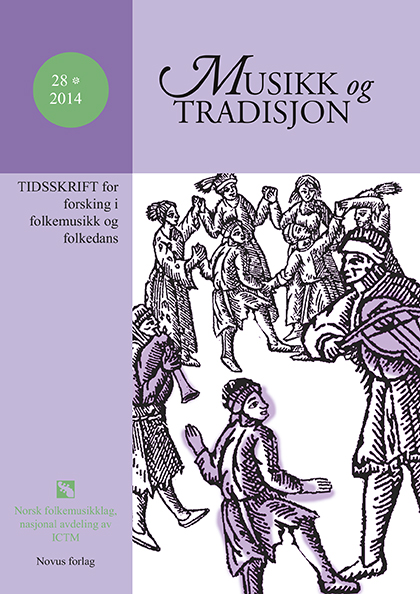Sammendrag
Norwegian telespringar is often referred to as being in so-called asymmetrical triple meter—that is, the three beats in the measure are of uneven duration. Previous studies report that a systematic long-medium-short beat duration pattern seems to be a prominent feature of telespringar. This paper investigates how motion data can be incorporated into studies of rhythmical structures in Norwegian telespringar using motion capture technology. It is reported from two motion capture studies: first, a fiddler playing telespringar on a Hardanger fiddle; second, a couple dancing telespringar. Participants' movements were recorded using an advanced optical infrared motion capture system. Motion analysis of the fiddler's foot stamping confirms the long-medium-short beat-duration hypothesis. In addition, the fiddler's upper-body movements seem to be in synchrony with the bar level of the music. Motion analysis of the up/down movement of the body's center of gravity in telespringar dancing shows a consistent libration pattern. These results appear to suggest that prominent rhythmical features of telespringar are represented in both the fiddler's and the dancers' body motion. They also indicate that motion capture technology is an effective means of investigating music-related movements in telespringar.
Forfattere beholder opphavsretten og gir tidsskriftet rett til første publisering av arbeidet.

